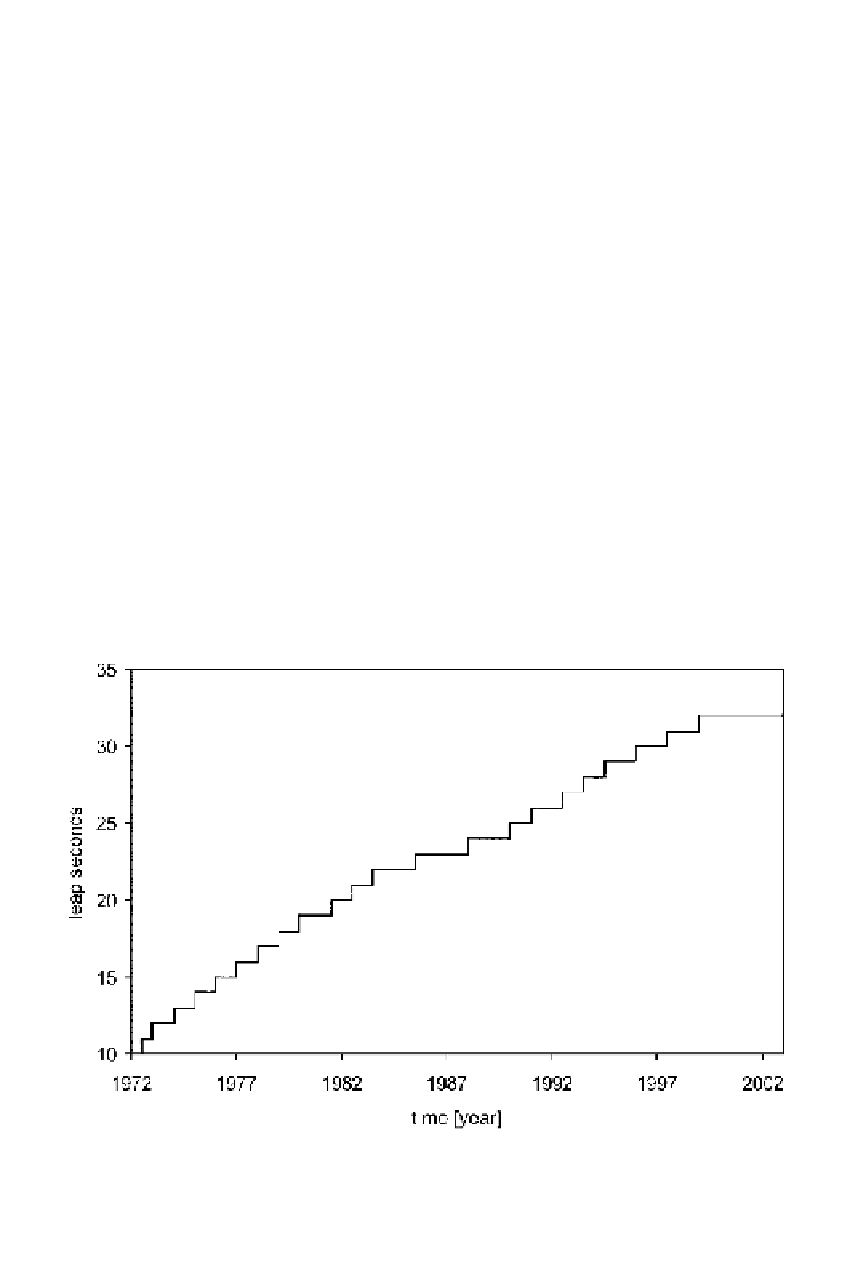Global Positioning System Reference
In-Depth Information
1
2
3
4
5
6
7
8
9
10
11
12
13
14
15
16
17
18
19
20
21
22
23
24
25
26
27
28
29
30
31
32
33
34
35
36
37
38
39
40
41
42
43
44
45
mean motions, we speak of true solar time. Astronomers call the difference between
mean time and true time the equation of time. Geometrically, it represents the angle
between the true earth and the mean earth as viewed from the sun. Simple graphics
shows that the mean solar day is longer than the sidereal day by about 24
h
/
365
4
m
.
The accurate ratio of universal day over sidereal day is given in (2.32). The condition
(2.40) underscores the compromising role of UTC. The precise time and frequency
users get the most uniform and accurate time available, and yet the epoch closely
adjusts to the rotational behavior of the earth.
Let's consider Equation (2.31) once again. If the earth were to rotate with constant
speed, and if the SI second would be absolutely equal to the theoretical value of the
ET (or UT1) second, then the difference UT1
≈
UTC in (2.31) would be constant. Any
variation in this difference is therefore attributable to variations in the earth's rotation
and the definition of the SI second. UTC is adjusted in steps of a full second (leap
second) if the difference (2.40) exceeds the specified limit. Adjustments are made on
either June 30 or December 31, if a change is warranted. The IERS determines the
need for a leap second and announces any forthcoming step adjustment. Figure 2.6
shows the history of leap second adjustments. The trend seen in Figure 2.6 could be re-
moved by changing the definition of the SI second, i.e., adopting a different number of
energy state transitions. However, changing the definition of a fundamental constant
has many implications (Mohr and Taylor, 2001). Figure 2.7 shows the total variation
of UT1
−
[27
Lin
—
0.0
——
No
*PgE
UTC. This includes the seasonal variations (annual and semiannual), as
well as variations due to zonal tides. Similarly to the effect on the nutations and solid
earth tides, the solar and lunar gravitational attractions cause periodic variations in
−
[27
Figure 2.6
Leap second adjustments.
(Data from IERS (2002).)












































